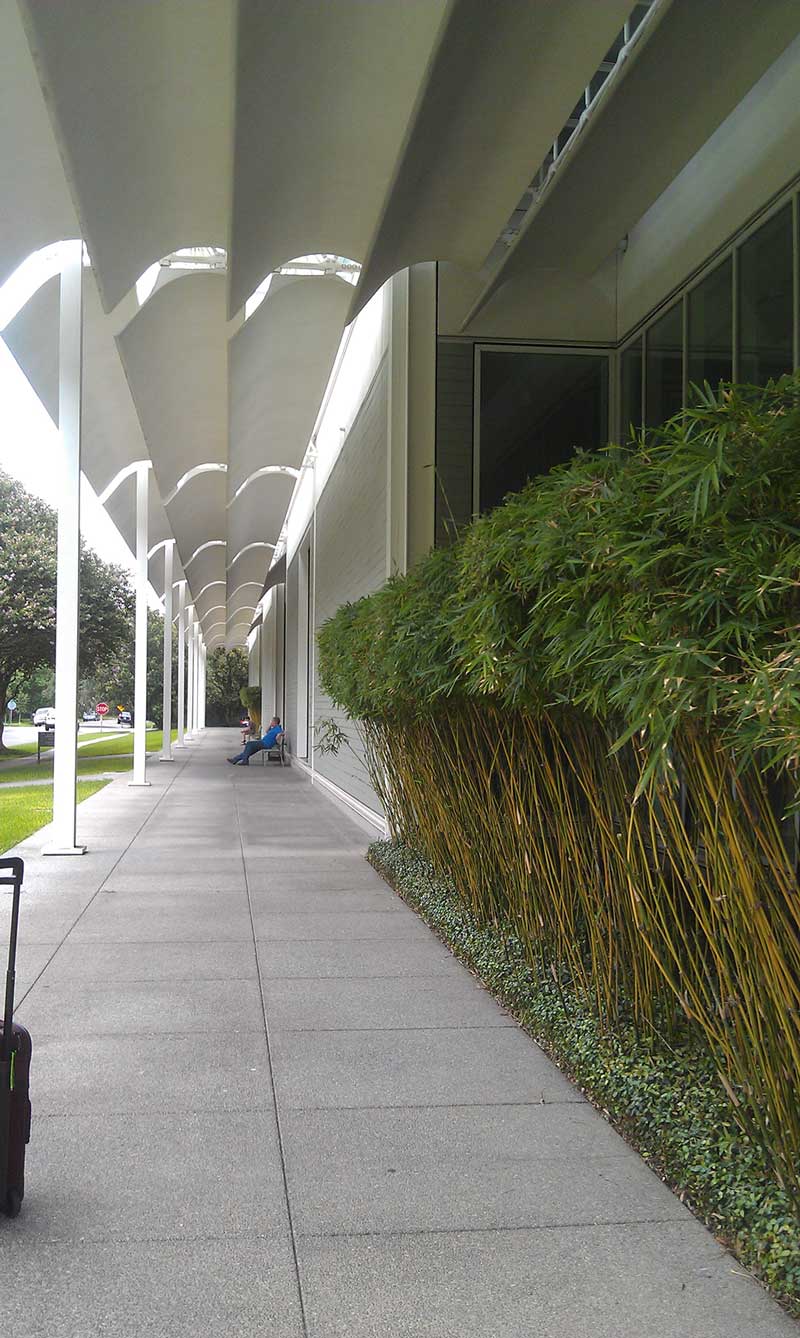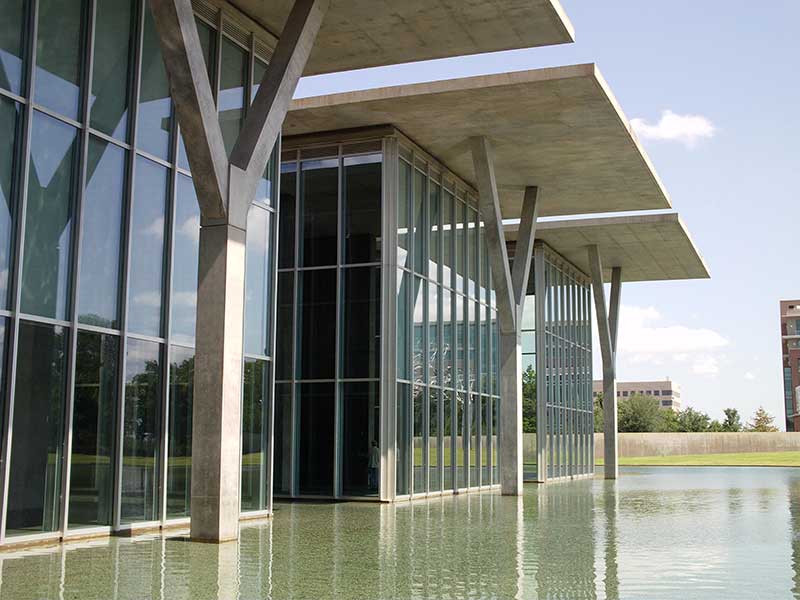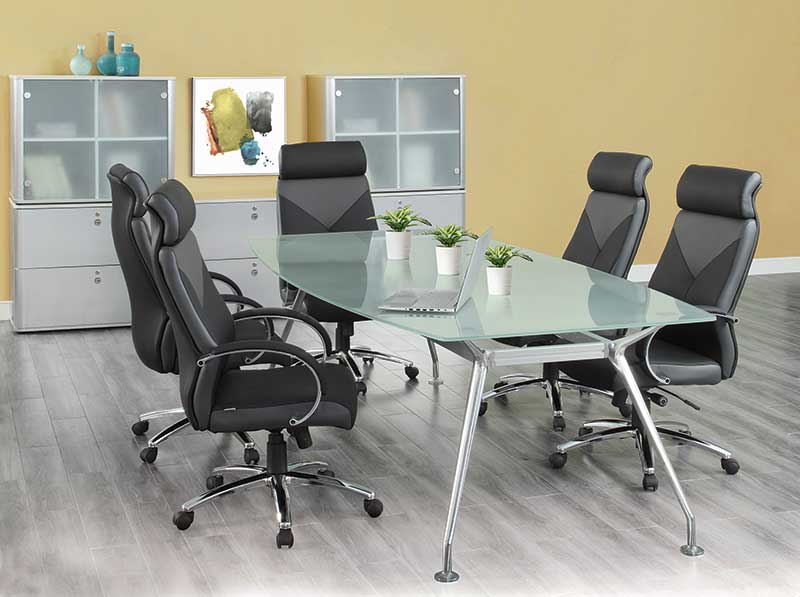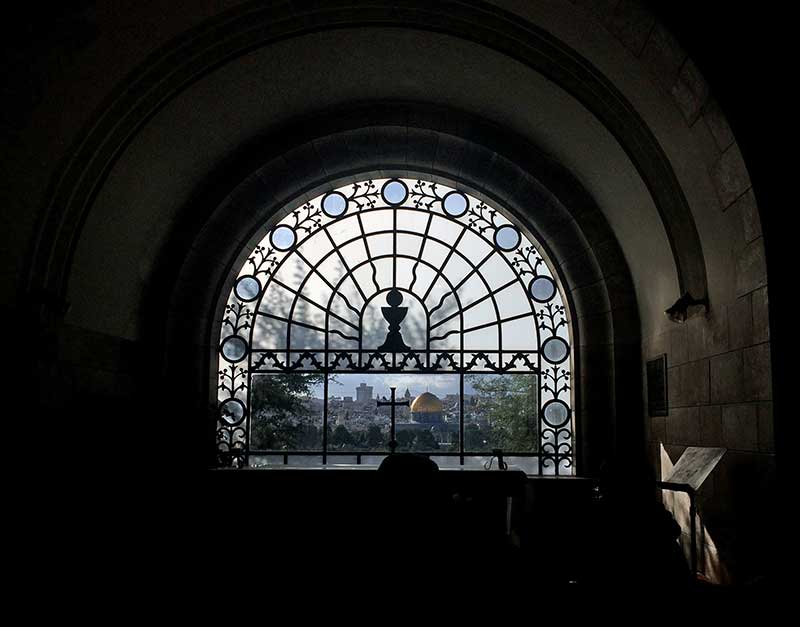Light is one of the most essential elements in our lives; we often take it for granted, yet we could not live without it. Light is not a tangible object that we can hold, but it interacts with us every day, affecting our bodies and emotions. Light is technically electromagnetic radiation that is visible to the human eye. It is composed of energy waves of varying lengths that contribute to the colors we see and the way we see them.
In the world of architecture, light is an element that is blocked, reflected, scattered, or absorbed to manipulate its effects on the users of a particular space. Techniques in which each method can be translated into the built environment are outlined below:
BLOCKED – Blocking the sun is a simple technique used by architects where shadows are intentionally introduced at strategic locations to eliminate harsh light and cool the space. These could be as simple as the shades or curtains in your home to elaborate mechanical devices that move with the sun to block its detrimental effects. A museum is an example of a building where light is a major concern and usually guides the primary design concept. This art museum in Houston, designed by Renzo Piano, uses strategically curved white solar devices to screen the sun away from the building. The design serves a dual purpose in providing a deep-shaded veranda where visitors can linger under the hot Texan sun, while also blocking harmful rays from entering the building and thus harming the artwork.

REFLECTED – Bouncing light off another surface is a technique used by architects to lessen glare while providing the natural benefits of light. Natural daylighting has been proven to decrease depression and mood disorders, while also improve productivity and energy levels of individuals. Who doesn’t want their employees or customers to have access to these results?

The museum in this photo also is located in Texas and must deal with the harsh sun. Here any direct light is blocked by huge concrete overhangs, but any secondary light is bounced off the reflecting pool to enter the building above eye level. No direct light enters the museum which allowed the architect, Tadao Ando, to use large panels of glass in a hot climate.
DIFFUSED – Breaking up the light waves so they are scattered erratically from the source is a way to create a soft natural light that eliminates sharp shadows or direct glare. Diffusion is a technique often used in workplace environments to mimic the outdoors where light is naturally scattered and reflected regularly. At a smaller scale, every single light fixture is designed to either disperse or direct the light source to create the appropriate high-quality output for its purpose. Even furniture in the workplace can contribute to the scattering of light as seen in this glass desk series from National Business Furniture.

ABSORBED – Light absorption is the process where electromagnetic waves strike an object and are converted to heat. When all frequencies of the waves are converted, the object appears black. When none of the waves are converted, and thus all are reflected, the object appears white. Realistically, every surface behaves somewhere in between where it is absorbing, reflecting, and transmitting simultaneously depending on the surface molecules of the object. This is how we see color. In this photo, we can see how the architect uses these basic techniques to highlight the importance of this window located behind the alter at the front of a church. Light passes entirely through the clear glass (transmission), light is completely converted into energy at the lead seams or soldering (absorption) and light is selectively absorbing and transmitting at the blue glass circles. Without the selective absorption, reflection, and transmission of light, we would live in a colorless world devoid of interest!


